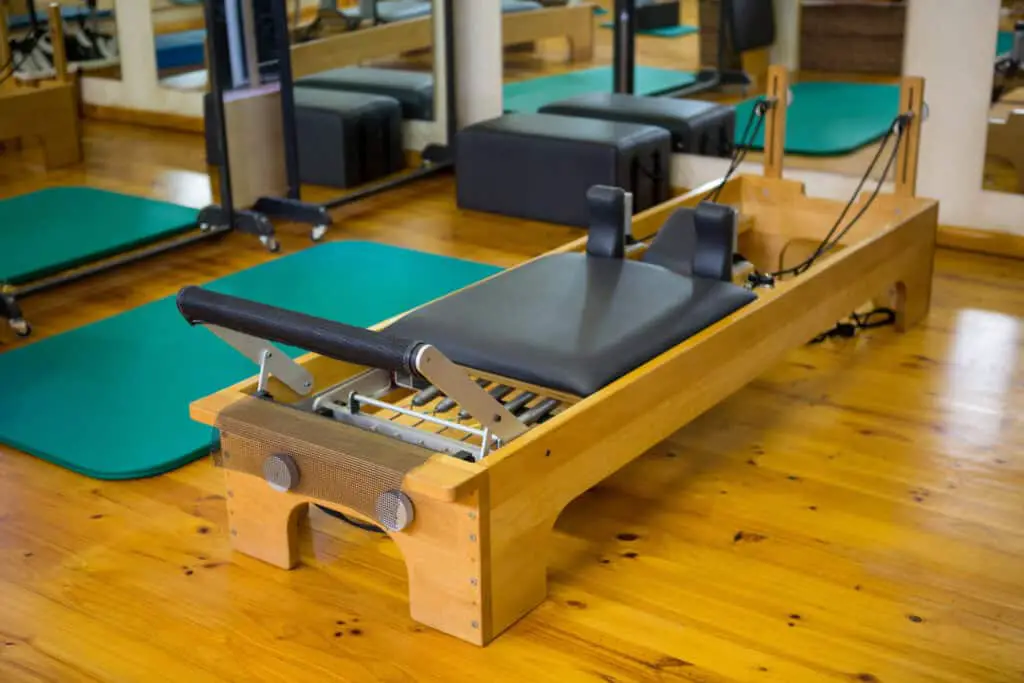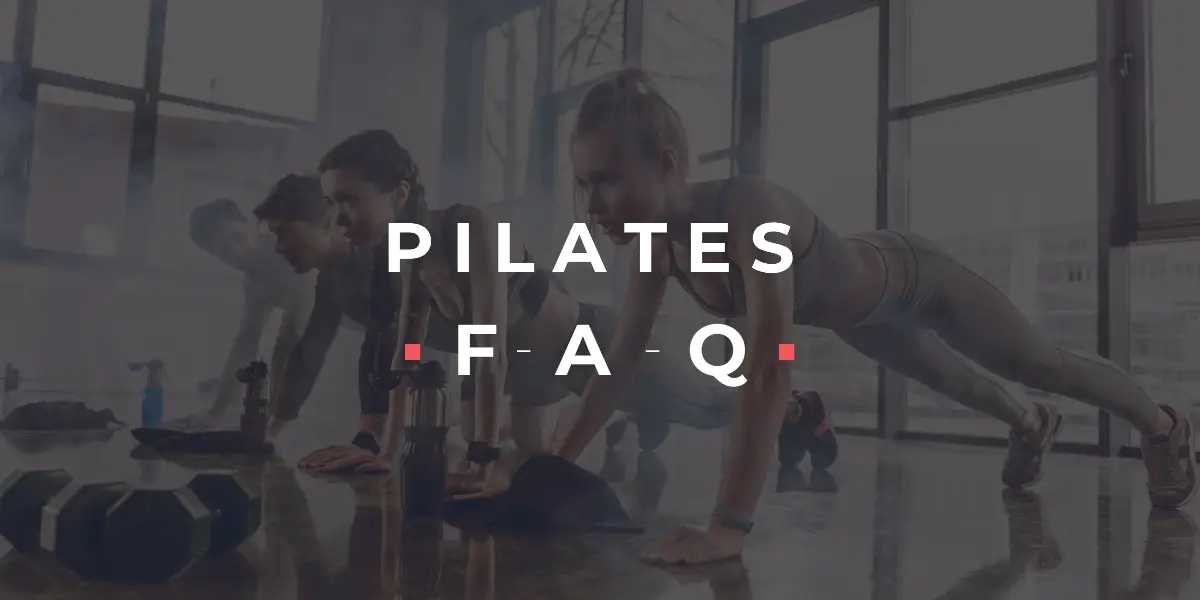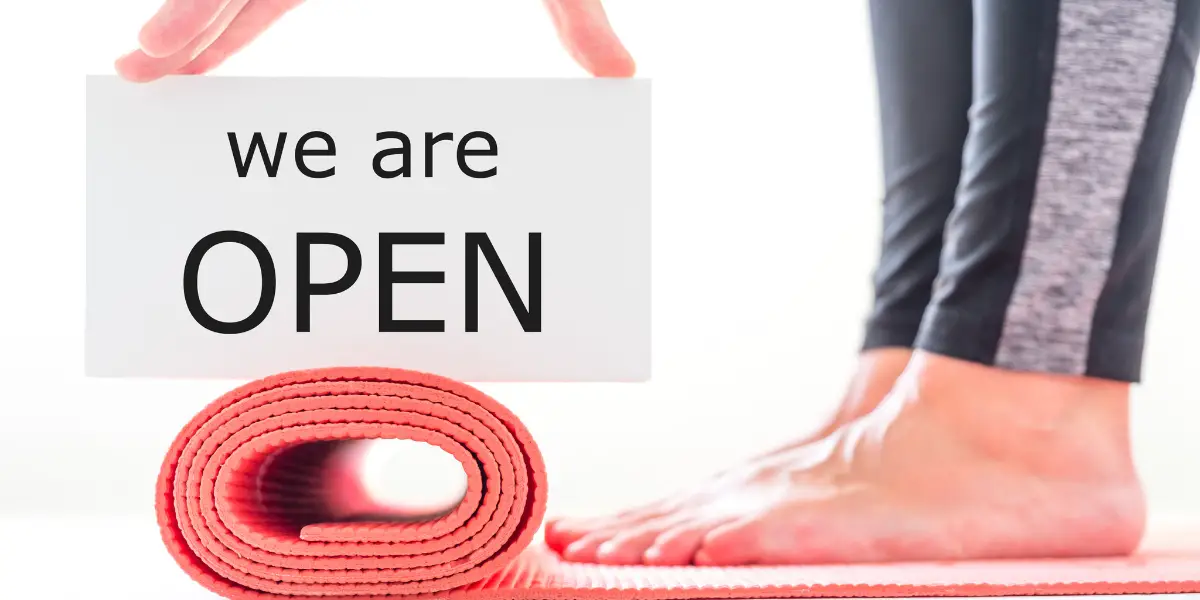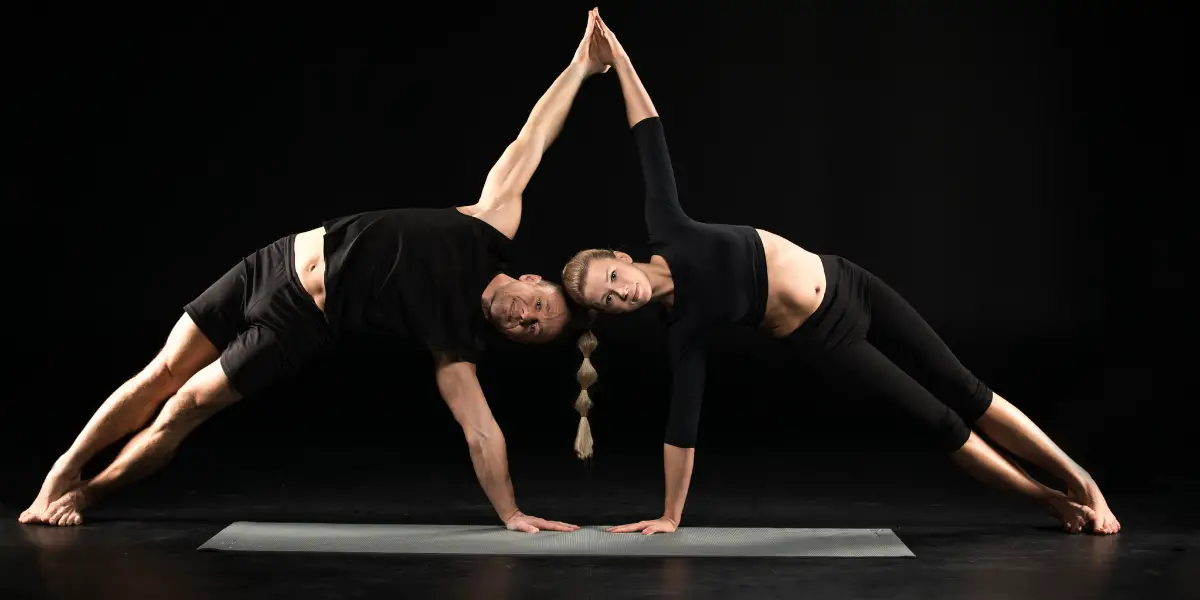Pilates has become widely used and accepted as a fitness choice over the past decade. It has evolved from a strictly studio-based activity into a practice that can be done at home or on the go and can even be incorporated into a strength training routine. It can be used to challenge balance, coordination and flexibility as well as increasing endurance and strength. But how much do you know about Pilates? Here we answer your most common questions.
Pilates Frequently Asked Questions
What is Pilates?
Joseph Pilates was the originator of the Pilates method. He was born in Düsseldorf in the late 1800’s. Joseph was a frail sickly child. He was a determined character and in a desire to overcome his fragility he experimented with many types and approaches to exercise. It’s possible to recognize these different elements in his teaching. He was influenced by gymnastics, yoga, skiing, self-defence, dance, circus training and weight training. Pilates chose aspects of each to develop his own body. He selected the most effective features from all these areas and in doing so he was able to create an exercise system which had the perfect balance of strength and flexibility.
During the latter part of World War I, Pilates served as an orderly in a hospital on the Isle of Man. At this time he began to work with patients and experimented by attaching springs to hospital beds offering support to the patient’s limbs while he worked with them. He and the doctors noticed that the patients seemed to recover more rapidly when their movement was supported. It was from here that he began to develop his methods and training techniques, gaining knowledge of rehabilitation and an understanding of how equipment can encourage and support movement.
Pilates originally entitled his method, “The Art of Contrology” or the art of controlled movements. This was his very own distinctive method of physical and mental conditioning. Today his method is known as ‘Pilates’ and is practised and enjoyed all over the world.
What are the Benefits of Pilates?
Pilates works on your flexibility, strength, and stability. It’s a holistic exercise that keeps the whole body in mind, and is said to improve posture, balance, and coordination. The exercises in a class are centred around a mat, and a series of movements that you can do on it. It is relaxing whilst being challenging and it’s meant to work on your entire body. One of the best benefits of Pilates is the difference it can make to someone’s posture, overtime. It helps with alignment, with breathing & to build core strength. For many it enhances the connection between their mind and body making them more aware of how they move.
What should I wear?
The Pilates community is one of the most diverse and welcoming out there, which makes it a great choice for people of all ages, levels of flexibility, and body types. One question that often comes up with newbies is what to wear during class. The answer is simple: wear something comfortable. While there’s no need to go out and purchase a new set of workout clothes, you should be wearing something that allows a free-range of movement, something that hugs your body so it doesn’t get in the way of your movements.
Do I have to be flexible to do Pilates?
Pilates is a great way to enhance your overall health and fitness using a method that doesn’t have to be complicated, expensive, or time-consuming. In fact, one of the major benefits of Pilates is that you can get a full-body workout without needing to spend hours on your mat. There’s no need for flexibility to do Pilates. I’ve heard people say that they will start Pilates when they are a little more flexible and I always say what are you waiting for, that day may never come! Many of the exercises will enhance your range of movement, mobility and flexibility. Sign up to a class and just get started and you will soon start to feel the physical and mental benefits, one of which is an improvement in your flexibility.
“If your spine is inflexibly stiff at 30, you are old. If it is completely flexible at 60, you are young.“
Joseph Pilates
Over time, it’s a great way to achieve many health and fitness benefits that doesn’t have to be complicated, expensive, or time-consuming.
Can I do Pilates at home?
The short answer is yes, you can do Pilates at home, but as with any home exercise there are just a few things to put into place. Firstly you will need a mat and then find a space in your home or outdoors in which you can move freely. Then look for a qualified Pilates professional to guide you as you start your journey. Ideally you will have patience, persistence & aim for consistency to achieve results. Pilates is a total body workout that improves your balance, core strength, flexibility and posture.
Is Pilates good for mental health?
Pilates has other benefits beyond the physical. It can really help to focus our mind and requires concentration. Being present, moving and breathing in the moment in a controlled focused way allows the mind to relax.
For change to be effective we need our body and mind working together. Through Pilates you will develop a greater body awareness and gain control through concentration. You will need to focus your mind on the precision and detail of the exercises. Moving consciously has many benefits. What we learn leads to unconscious improvements to the way our body moves every day, moving with increased confidence and control.
Relaxation is another important part of a Pilates session, both of the mind and body. The focus is on releasing areas of the body where there is tension. As we relax, the mind will also relax. We focus on being present and totally focused on the task of moving correctly and this is why Pilates works so well for stress relief, channelling your focus and energy, positively.
It’s worth noting that it’s going to take a conscious effort to relax overactive muscles and this is a key part of Pilates exercises. If we can achieve this, it will enable muscles that are less effective to be recruited and engaged. When we talk about ‘relaxation’ in Pilates we are aiming to reduce inappropriate muscle tension and to make clients aware of where they hold tension. Release and relaxation are an active process in class.
I have back problems/an injury. Is Pilates safe for me to do?
It’s a legitimate question. If you have back issues or pain, you’re not the only one wondering if you can safely do Pilates. Many physiotherapists recommend that their clients with back problems take up Pilates, as it will help to strengthen your core muscles and potentially improve spine mobility.
Pilates is a wonderful exercise option for people who have a history of back problems but who are now free from pain and ready to exercise. Anyone with a back problem that is Postural can really reap the benefits of Pilates. Everyone must be cleared by a medical practitioner and always make your instructor aware of your medical history. A qualified instructor can also show you how to modify exercises ensuring you move safely and mindfully.
Why is keeping a “neutral spine” important?
When you look at a person standing with a ‘neutral spine’ the shoulders are over the pelvis, the head is upright, and the natural curves of the spine are present. This position may seem like an impossible standard to meet in daily life, even more so when we are in a seated position.
Through Pilates, clients become more body aware which can lead to them noticing their posture and misalignments. Muscles can be strengthened and lengthened over time and mobility increased all of which can aid better posture and alignment. Aside from wanting to improve posture from an aesthetic point of view, working towards achieving a Neutral spine will protect our joints, reduce the risk of injury and promote healthy alignment for everyday activities.
Can I do Pilates while I’m pregnant?
The answer is a resounding YES! It is important to get a professional evaluation to determine if you have any restrictions. If so, then you can work with a professional to find a safe way to get the most from your classes while protecting yourself and your baby.
Is Pilates a cardiovascular workout?
Pilates may not be the first thing that comes to mind when you think of cardiovascular workouts, but the traditional Pilates exercises used in a reformer class offer many of the same benefits as other aerobic exercises, including low-impact aerobic movement and your heart rate increases. This makes Pilates a popular option for people who want to try an exercise routine that will boost their heart rate, but doesn’t involve running or other high-impact exercise. It may not be the first form of exercise that springs to mind but trust me once you begin to realize its benefits as a cardiovascular exercise you’ll be wondering why you didn’t try it sooner & your joints will thank you for it.
We recently put different Pilates workouts to the test to see if they offered a cardio workout, you can read more here: https://pilatesmovesyou.com//yes-pilates-can-be-a-cardio-workout/
Is Pilates the only form of exercise I need to take?
The idea that Pilates is the only form of exercise you need to take is not new. In fact, it’s an idea that has been around for many years. The belief is that Pilates can effectively address all the components of fitness (cardio, muscular strength, muscular endurance, flexibility and balance) required for a healthy body. The reality is that while Pilates is a wonderful fun form of exercise that effectively targets these components of fitness, it’s down to an individual to make that choice.
How many times a week should I do Pilates?
Most Pilates instructors will tell their students to practice 2-3 times a week. However, it can be difficult to follow that schedule if you are not used to exercising, or if you have a busy home life. Taking up any form of exercise even once a week will have benefits if currently you are not exercising.
If you are already exercising but want to potentially add Pilates into your week as a new form of exercise let’s think about why you want to start it. If it’s because you want to do something relaxing then an hour a week may be enough. If you are recovering from an injury you may want to add in 2-3 sessions a week to speed up the rehabilitation process.
Maybe you are a runner with a specific running goal or race in mind and want to layer Pilates into your training to ward off injury and increase your mobility then on top of your run training, 1-2 Pilates classes each week will make a difference. It can be hard to stick to a schedule that is too hard to manage so start slowly, find a class and instructor you like and then take it from there.
What Equipment Do I Need?
You can ask any five Pilates students what equipment they use in their classes and you’ll get at least five different answers.
The first thing you will need is an exercise mat. These mats come in varying lengths, so make sure to get one that is the right size for you. Yoga mats tend to have less padding so shop around and if you can afford it purchase a mat that is designed for Pilates.
Other commonly used pieces of equipment are Pilates soft balls, hand weights and bands. If you are joining a studio class for the first time it’s highly likely the equipment will be provided for you. However, when you first dip your toe into the world of online Pilates you want to know that this is something you are going to continue with before you start investing money on equipment. Newcomers to my online classes use a cushion instead of a ball, food tins rather than weights and a pair of tights or a rolled up towel rather than a band.
Why do we use Equipment ?
Further on your Pilates journey there are larger pieces of equipment you may wish to invest in such as the Pilates ‘Reformer’ or ‘Chair’. Whilst these are fantastic and versatile pieces of equipment you do not have to have them to practice Pilates.
What is Reformer Pilates?
Reformer Pilates is Pilates performed on a piece of equipment designed by the founder of this wonderful exercise method Joseph Pilates. It is a frame that looks like a bed with a carriage that moves. Most of the exercises performed on a Reformer have to do with pulling or pushing the carriage whilst working with the resistance of metal springs.

The carriage has shoulder rest to stop you from sliding off the reformer and to give resistance as the carriage is pushed and pulled. There are a number of springs which are used to add challenge and resistance.
There is a footbar that can be used by hands or feet as the carriage moves and there are long straps which can be pulled by legs or arms to move the carriage. The possibilities are endless when using the Reformer. You can challenge the body in a dynamic, diverse way to promote strength, length, balance and flexibility.
The Reformer is a large piece of equipment that can accommodate a full range of motion which is fantastic for building strength, core stability and increasing flexibility. It can be used by those new to Pilates or to challenge more Advanced Practitioners.
On first viewing many clients comment that it looks like an instrument of torture then go on to be amazed by its versatility and ability to transform the body.
How is Pilates different from, or similar to, yoga?
There are many similarities and differences between Pilates and yoga. Both Pilates and yoga are based on a system of poses or postures that are designed to strengthen and lengthen the muscles and tendons, they both have mental health benefits, they are low impact and kind to joints.
However, Pilates is a more dynamic and athletic form of exercise, it’s great for rehabilitation from injury and surgery and it focuses on developing the core muscles. It can also incorporate equipment that is not necessary for a yoga routine, such as the reformer machine and Cadillac.
Yoga has more variations than Pilates, it has strong spiritual focus and can be a form of mediation with its focus on mindfulness and breathing. With Pilates the movements are smaller and more precise making it ideal for rehab. When you practice Yoga the movements are generally bigger with more transitions. The correct form is essential with each, so both are best done with an instructor.




